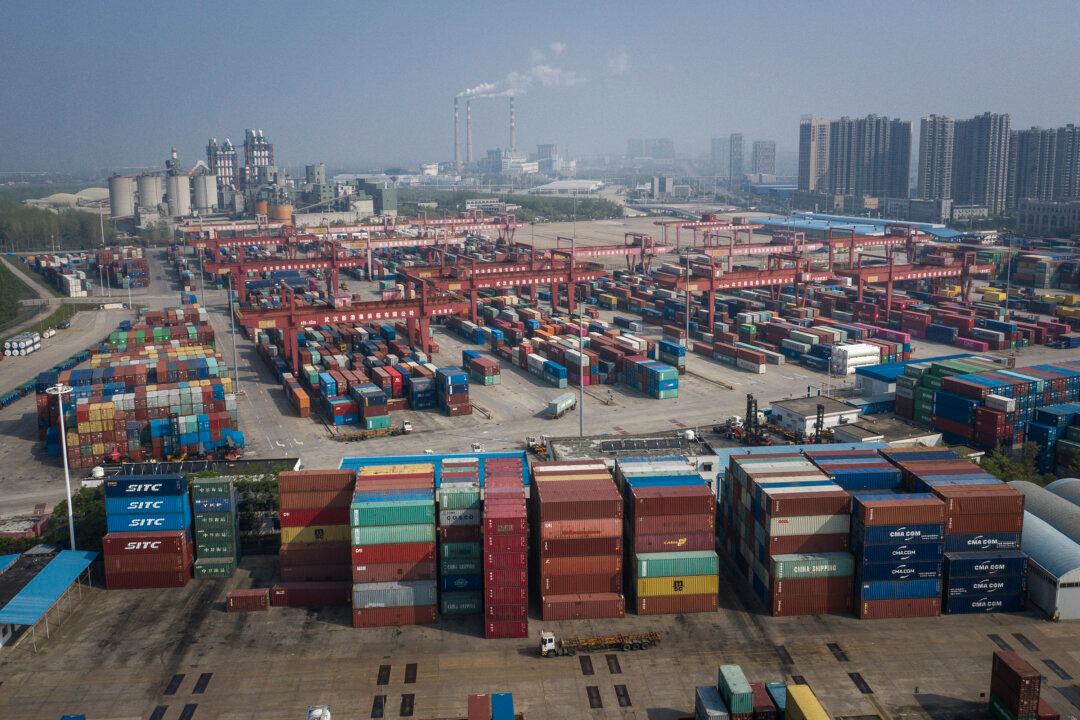Off and on over the years, people—in the West and in China—have speculated how that country’s fast-developing economy will remake the world’s trading and economic system.
During this time, it has also become popular to speculate about when and how China’s yuan will supplant the dollar as the world’s reserve currency. Official statements from Beijing have shown greater modesty on these points than media speculation does, but it has also been clear that China’s leadership enjoys hearing such things.
But a recent directive from the People’s Bank of China (PBOC) suggests that such “glorious” ambitions are still a very long way off. This directive shows instead that China still relies on its original, export-driven development model and is in no position either to upend the world trading system or to raise the yuan to the status of the global reserve.
This revealing guidance emerged recently from China’s Foreign Exchange Market Self-Discipline Mechanism under the direction of the PBOC. It severely limits the amount of proprietary currency trading a Chinese bank can do. It tells the banks that they will come under severe scrutiny if their proprietary currency trading rises more than 50 percent from the previous year or if it exceeds 15 times the amount the banks execute for their clients.
On its surface, this rule seems simply like a straightforward safeguard against excess. It is not. It aims instead to stop the speculation in the yuan that has of late driven the currency up against the dollar, the yen, the euro, and just about every other currency in the world. It reveals an urgent need to stop this currency appreciation and that in turn makes clear that China still very much needs to protect its position as an exporter of low-cost goods—the very same model that it embraced some 50 years ago at the beginning of its remarkable period of development. For all the economic sophistication China claims and for all the statements that it has moved away from this simple model, that economy still seems to rely on these past practices.
In other words, China is still playing its original game. Early on, China could count on low wages, especially relative to the United States and other developed economies, to keep its goods attractively priced. To ensure this pricing edge, the PBOC intervened regularly in foreign exchange markets to keep the yuan cheap to dollars and other currencies, and so hold down the cost of Chinese-made goods to foreign buyers.
For a while the PBOC held the yuan at a rigid low rate to the dollar. This behavior often received criticism and threats from China’s trading partners. The United States more than once considered labeling China a “currency manipulator,” which would have elicited all sorts of restrictions on China trade.

Under this foreign pressure, most especially during the 2019 “trade war” with the Trump White House, China abandoned outright manipulation. Beijing’s ambition to enter the leading ranks of developed economies also played a role in that decision, for export dependence and currency manipulation are the practices of a less developed economy. Accordingly, Beijing claimed that its economy was less export-dependent than it had been and that it had no need to manipulate the yuan’s foreign exchange value.
But now, as China’s economy has slowed, Beijing seems to have hurried back to its old model. The authorities know better than to invite criticism and retaliation by going back to direct manipulation, but this banking rule will have a similar effect on the yuan’s exchange rate and Chinese exports.
Beijing’s effective confession of export dependence casts a lot of doubt on the level of economic sophistication claimed by China and for China. It casts even more doubt on the yuan’s potential to replace the dollar as the world’s reserve currency.
Reserve currencies simply cannot come from export-oriented economies. When a currency attains reserve status, it is held around the world for trading but also for financial dealings and as a store of value. That excess holding means that the economy behind the reserve currency must put more of it into the world than it takes in, either through financial dealings or by running a trade deficit or both.
China’s latest action announces that it wants—needs—an export surplus to sustain its development model. Its approach is antithetical to the one required for a reserve currency.
Maybe in the fullness of time China will lose its export dependence and develop the integrated economy that can support its ambitions and those frequently voiced for it. But its latest action, obscure though it may be, announces that it is a long way from such achievements.





